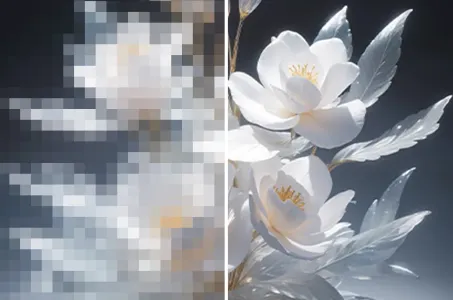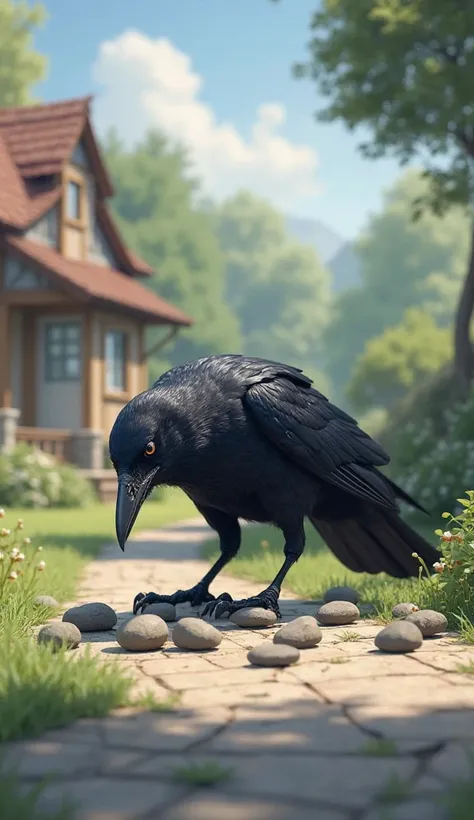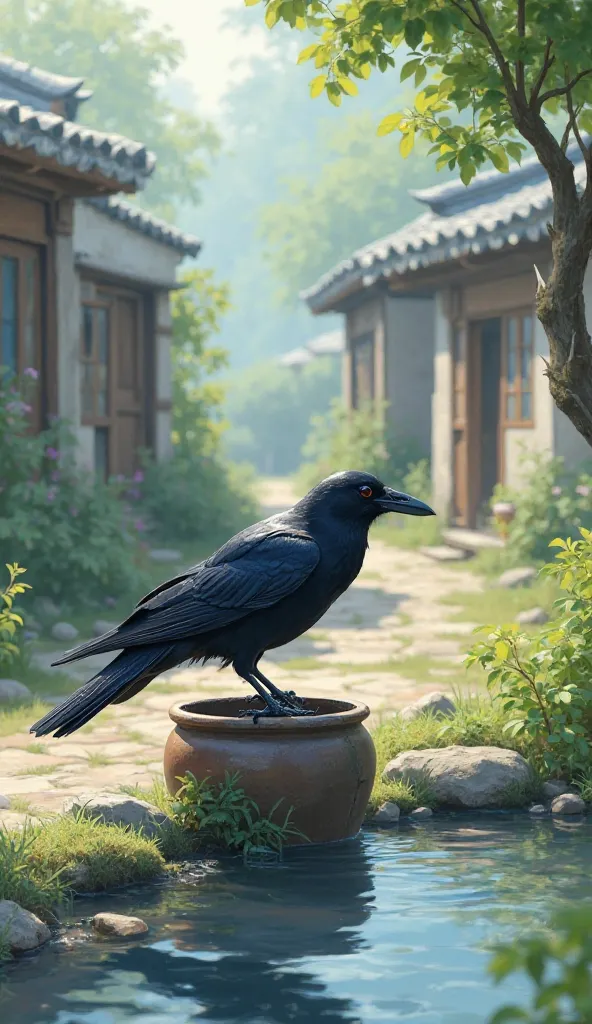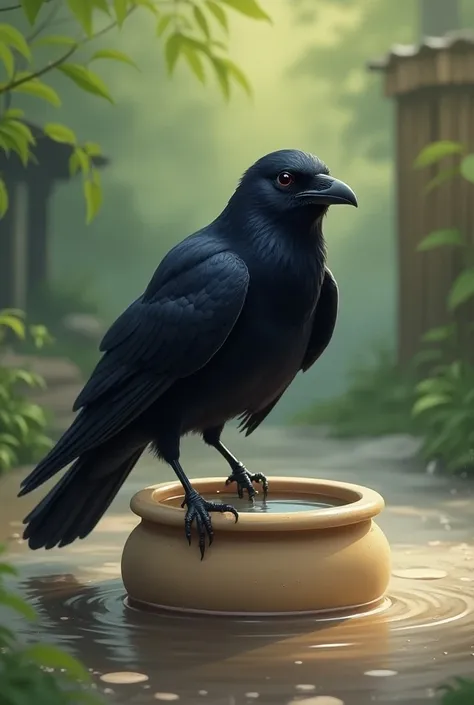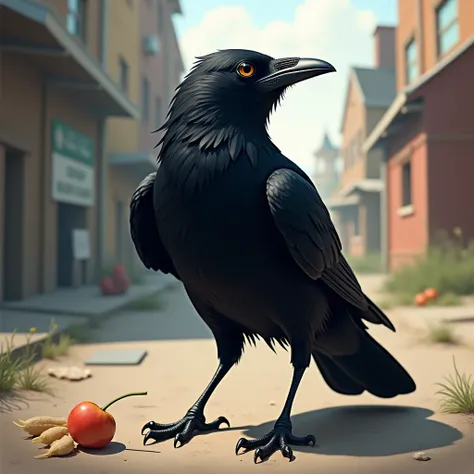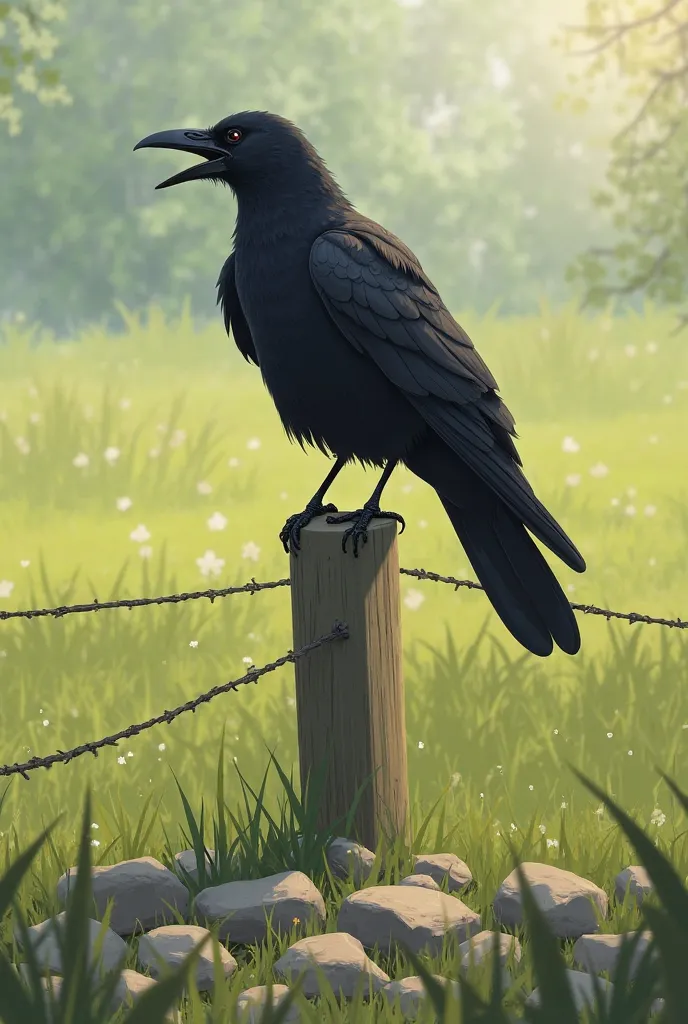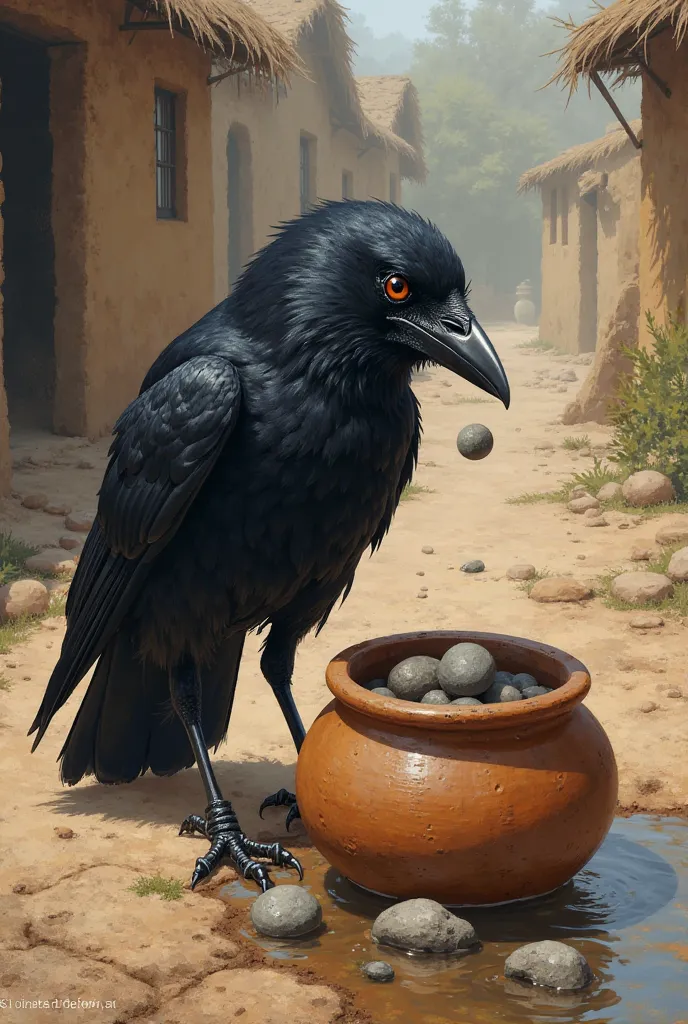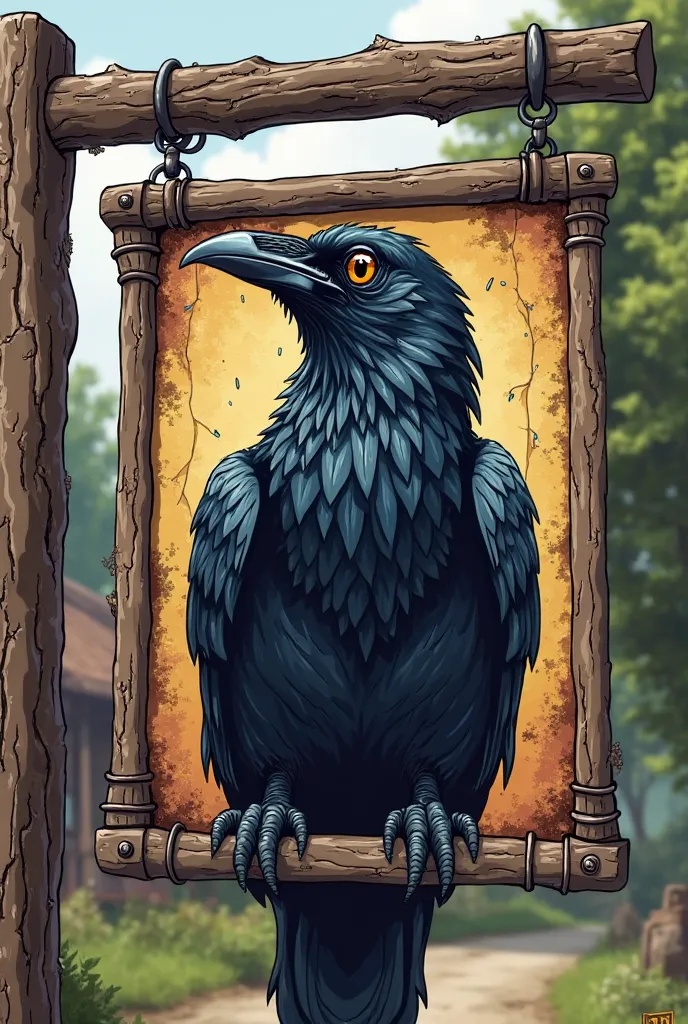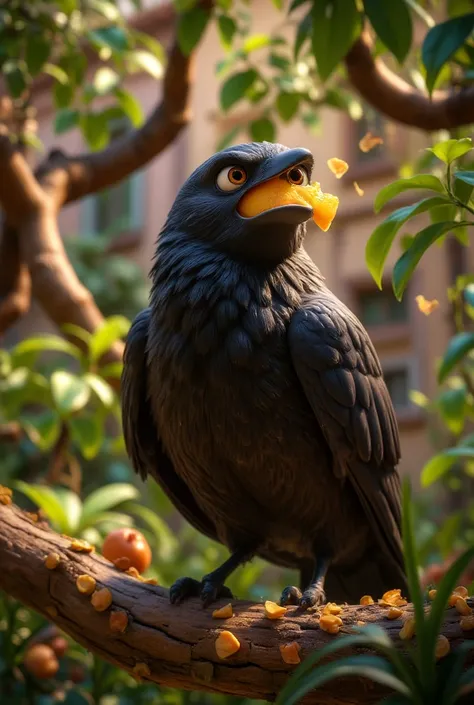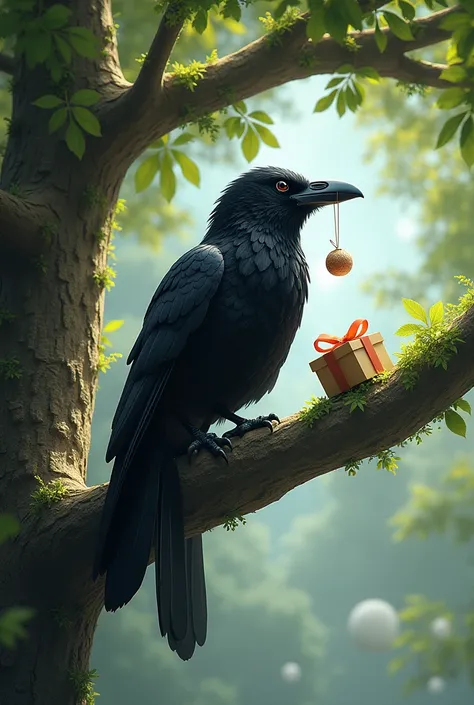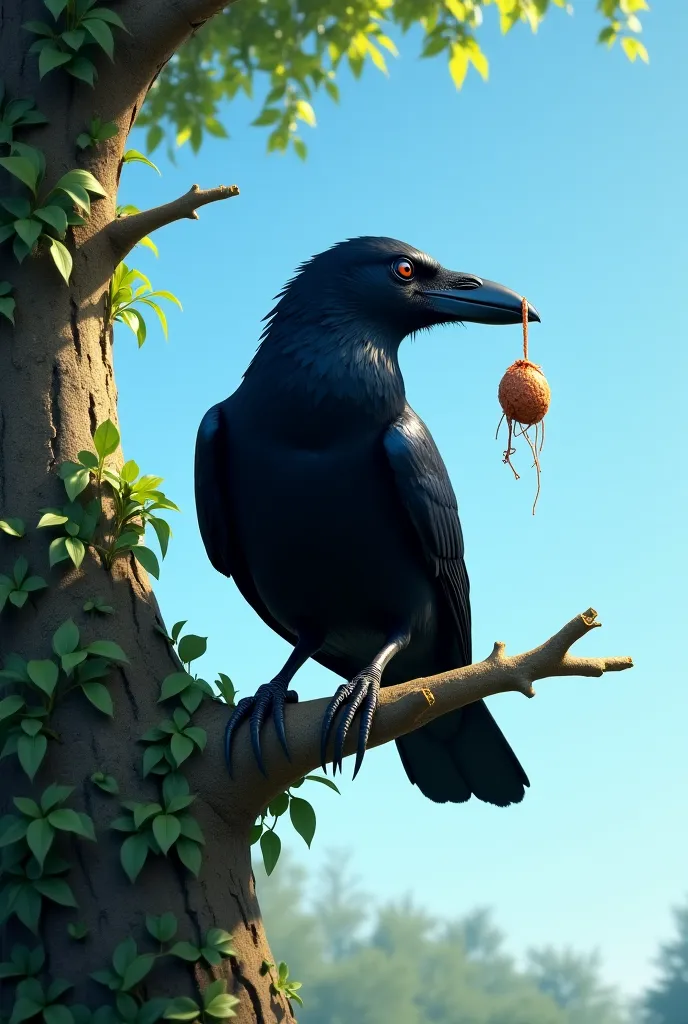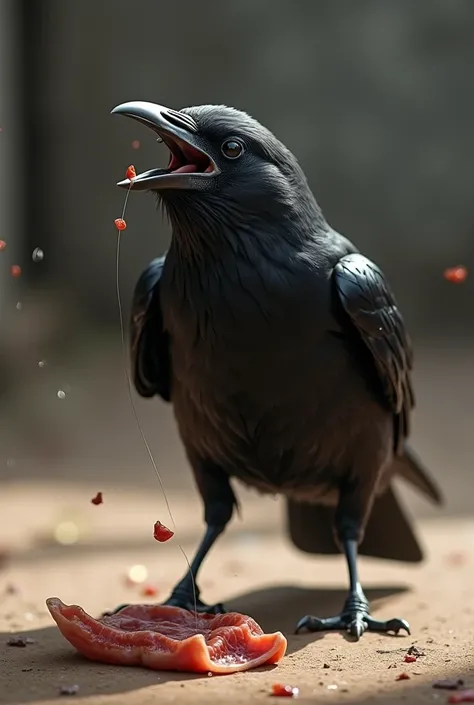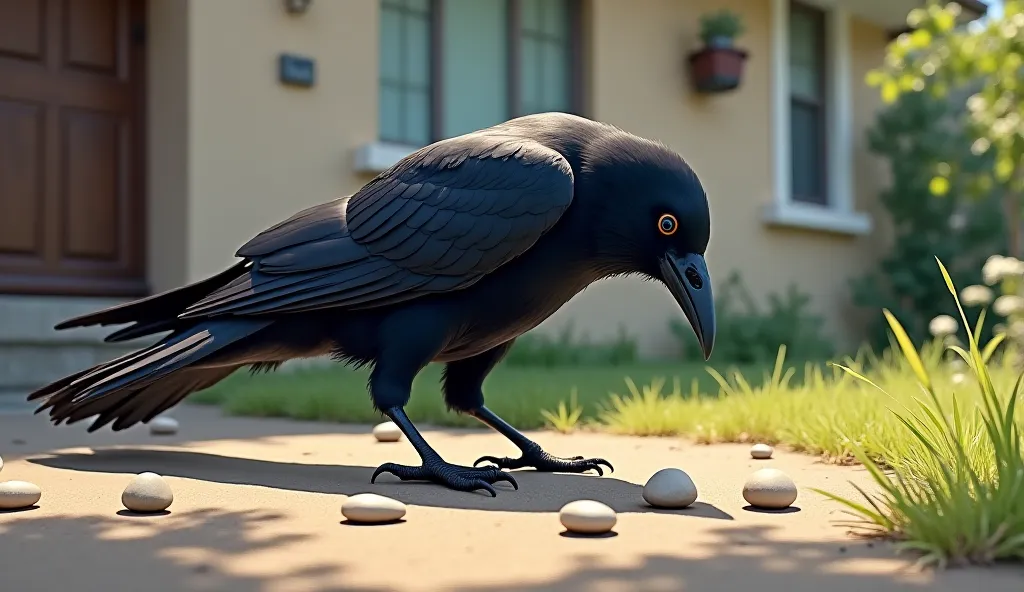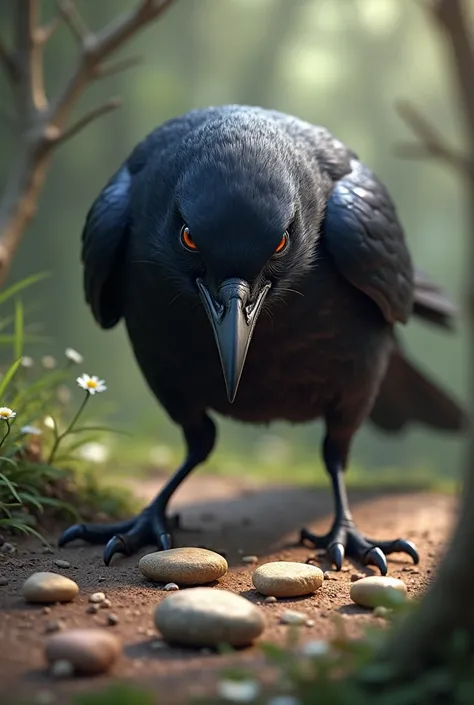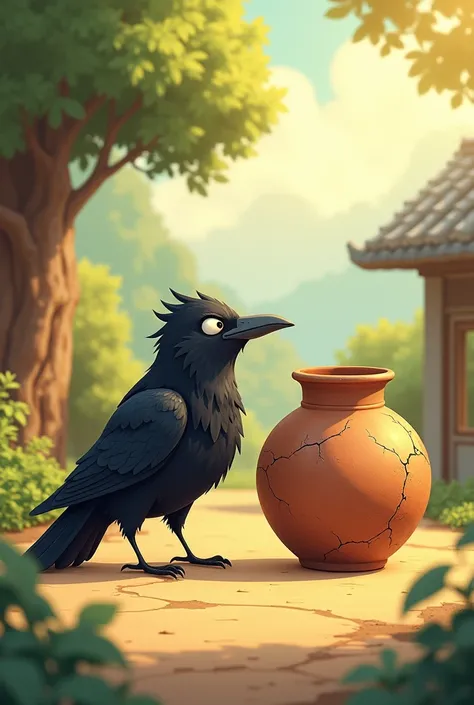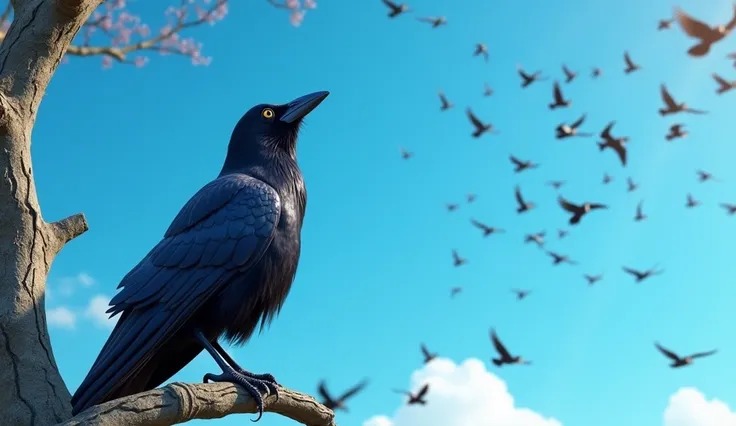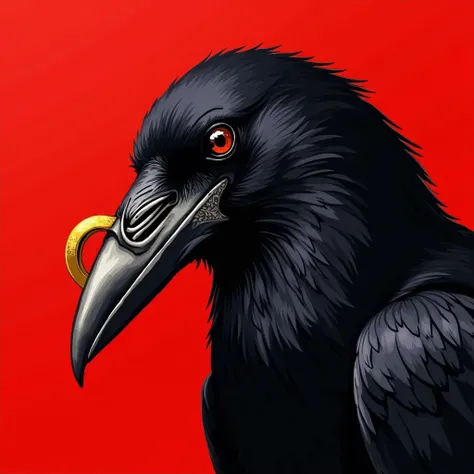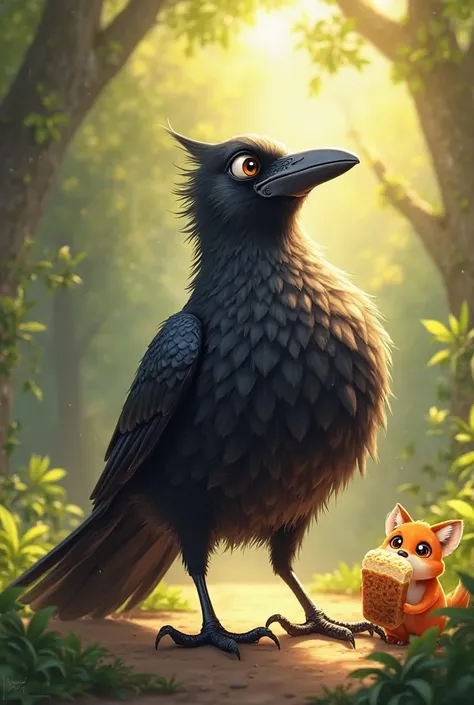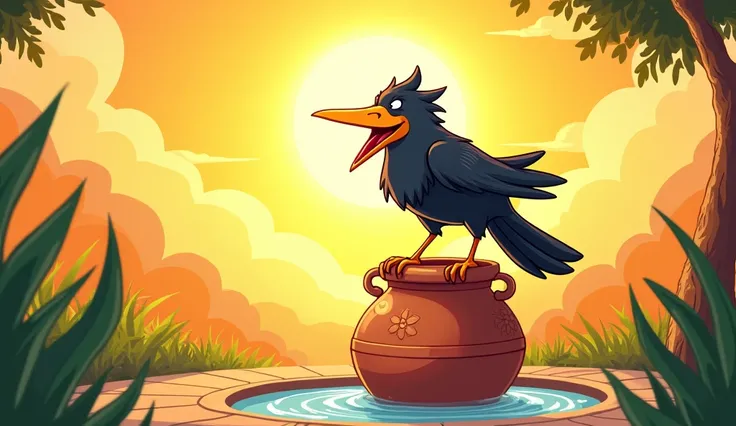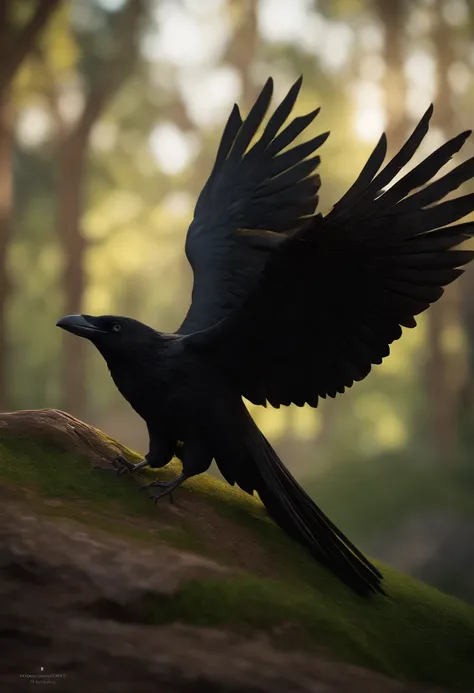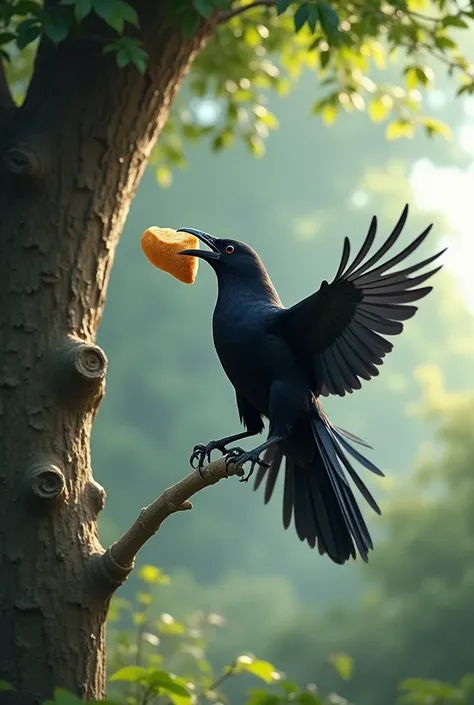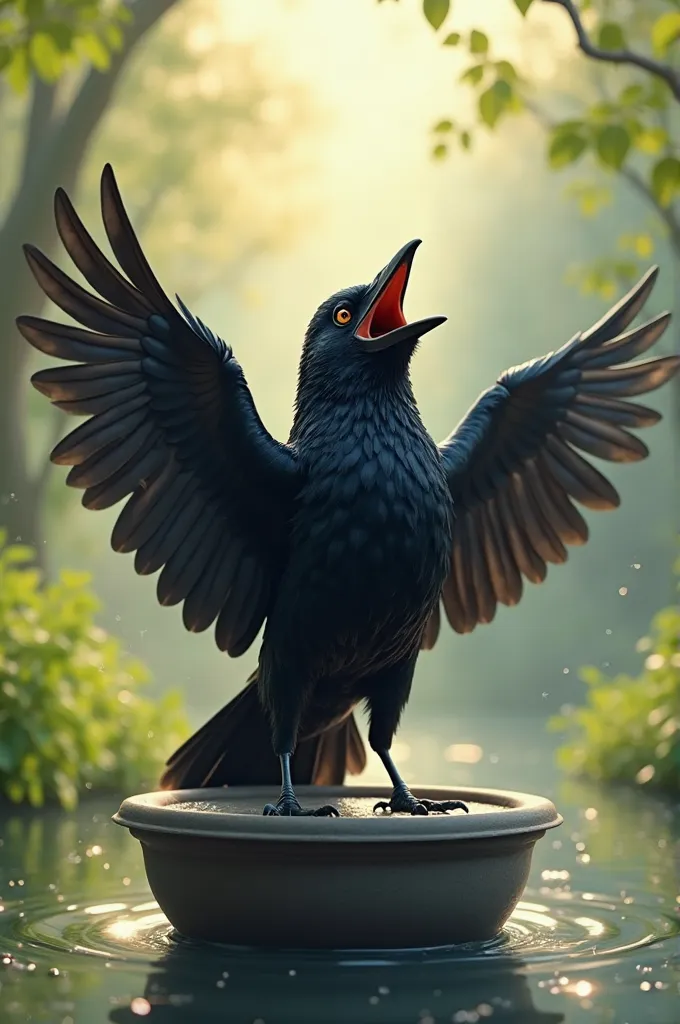There is a black bird standing on a wooden deck
![金crow、日to鳥がいる」という伝承to見られる想像上のカラス。中国や日本toおいてこのようto呼ばれるほか、陽crow(Good morning)、黒crow(Kokuu)、赤crow(Sekiu)Also called。太陽toいる鳥がカラス(crow)であるとする解説は古代から中国toあり、『Songs of Chu』天問の王逸注toも「日中のcrow」You can see the word[1]。Also、『Sankai Sutra』(Great Ara East Kei)It is also written that the crow carries the sun and moves through the sky.[1]。日の出と日の入りの時間帯to移動をするカラスの動き[2]、It is also thought to symbolize sunspots.、The fact that it is said to be a crow seems to come from its plumage color.[1]。The word gold refers to the brightness of the sun's body.。 The characteristic of having three legs is also often mentioned.(三足crowを参照)、It can be cited as the most noticeable feature when drawn.。道教や陰陽道などto基づいた古典的解説では、The number three is positive[3]、Crows are often talked about because they are sunbirds.。三本足であることを強く押し出した金crowの説は、漢の時代to大きく広まったようである[1][2]。 When the sun and moon are drawn、日tocrow、月to兎(Alsoは蟾蜍)が描き込まれることは中国を中心to古くから行われており、Murals and ritual items、flag(Hata)などto残されている。日本でも鎌倉・室町時代to仏教絵画として描かれた『twelve celestial images』[4]では日天・月天の持物としての日・月の中tocrowと兎が描き込まれている作例がみられるなど、Widely used as a subject to represent the sun in works of art。Until the Edo period、天皇即位の際to用いられていた冕冠(Encyclopedia)Ya robe(Hello)、日像幢toも用いられている。「金crow」Although the name is used、描かれるカラスのすがたは通常のカラスのようto黒く描かれ、背後to描かれる太陽あるいはそれを示す円が朱や金で彩色されることがほとんどである[5]。 In Japanese mythology、神武天皇を案内したと記述されている八咫crow(Yatagarasu)to「Amaterasu Omikami sent」という点から金crowと共通する「sun and crow」The connection between、平安時代以後toそのすがたが金crowのような三本足のすがたとして説明されるようtoなっている。](https://image.cdn2.seaart.me/2024-01-22/cmmt10de878c738srikg/ef0409afbf6c2832c2c78be81ea43639bfec2cd3_high.webp)

金crow、日to鳥がいる」という伝承to見られる想像上のカラス。中国や日本toおいてこのようto呼ばれるほか、陽crow(Good morning)、黒crow(Kokuu)、赤crow(Sekiu)Also called。太陽toいる鳥がカラス(crow)であるとする解説は古代から中国toあり、『Songs of Chu』天問の王逸注toも「日中のcrow」You can see the word[1]。Also、『Sankai Sutra』(Great Ara East Kei)It is also written that the crow carries the sun and moves through the sky.[1]。日の出と日の入りの時間帯to移動をするカラスの動き[2]、It is also thought to symbolize sunspots.、The fact that it is said to be a crow seems to come from its plumage color.[1]。The word gold refers to the brightness of the sun's body.。 The characteristic of having three legs is also often mentioned.(三足crowを参照)、It can be cited as the most noticeable feature when drawn.。道教や陰陽道などto基づいた古典的解説では、The number three is positive[3]、Crows are often talked about because they are sunbirds.。三本足であることを強く押し出した金crowの説は、漢の時代to大きく広まったようである[1][2]。 When the sun and moon are drawn、日tocrow、月to兎(Alsoは蟾蜍)が描き込まれることは中国を中心to古くから行われており、Murals and ritual items、flag(Hata)などto残されている。日本でも鎌倉・室町時代to仏教絵画として描かれた『twelve celestial images』[4]では日天・月天の持物としての日・月の中tocrowと兎が描き込まれている作例がみられるなど、Widely used as a subject to represent the sun in works of art。Until the Edo period、天皇即位の際to用いられていた冕冠(Encyclopedia)Ya robe(Hello)、日像幢toも用いられている。「金crow」Although the name is used、描かれるカラスのすがたは通常のカラスのようto黒く描かれ、背後to描かれる太陽あるいはそれを示す円が朱や金で彩色されることがほとんどである[5]。 In Japanese mythology、神武天皇を案内したと記述されている八咫crow(Yatagarasu)to「Amaterasu Omikami sent」という点から金crowと共通する「sun and crow」The connection between、平安時代以後toそのすがたが金crowのような三本足のすがたとして説明されるようtoなっている。
Prompts
Copiar prompts
金crow、日to鳥がいる」という伝承to見られる想像上のカラス
。
中国や日本toおいてこのようto呼ばれるほか、陽crow(Good morning)、黒crow(Kokuu)、赤crow(Sekiu)Also called
。
太陽toいる鳥がカラス(crow)であるとする解説は古代から中国toあり、『Songs of Chu』天問の王逸注toも「日中のcrow」You can see the word[1]
。
Also、『Sankai Sutra』(Great Ara East Kei)It is also written that the crow carries the sun and moves through the sky
.
[1]
。
日の出と日の入りの時間帯to移動をするカラスの動き[2]、It is also thought to symbolize sunspots
.
、The fact that it is said to be a crow seems to come from its plumage color
.
[1]
。
The word gold refers to the brightness of the sun'
;
s body
.。
The characteristic of having three legs is also often mentioned
.
(三足crowを参照)、It can be cited as the most noticeable feature when drawn
.。
道教や陰陽道などto基づいた古典的解説では、The number three is positive[3]、Crows are often talked about because they are sunbirds
.。
三本足であることを強く押し出した金crowの説は、漢の時代to大きく広まったようである[1][2]
。
When the sun and moon are drawn、日tocrow、月to兎(Alsoは蟾蜍)が描き込まれることは中国を中心to古くから行われており、Murals and ritual items、flag(Hata)などto残されている
。
日本でも鎌倉・室町時代to仏教絵画として描かれた『twelve celestial images』[4]では日天・月天の持物としての日・月の中tocrowと兎が描き込まれている作例がみられるなど、Widely used as a subject to represent the sun in works of art
。
Until the Edo period、天皇即位の際to用いられていた冕冠(Encyclopedia)Ya robe(Hello)、日像幢toも用いられている
。
「金crow」Although the name is used、描かれるカラスのすがたは通常のカラスのようto黒く描かれ、背後to描かれる太陽あるいはそれを示す円が朱や金で彩色されることがほとんどである[5]
。
In Japanese mythology、神武天皇を案内したと記述されている八咫crow(Yatagarasu)to「Amaterasu Omikami sent」という点から金crowと共通する「sun and crow」The connection between、平安時代以後toそのすがたが金crowのような三本足のすがたとして説明されるようtoなっている
。
INFO
Checkpoint & LoRA
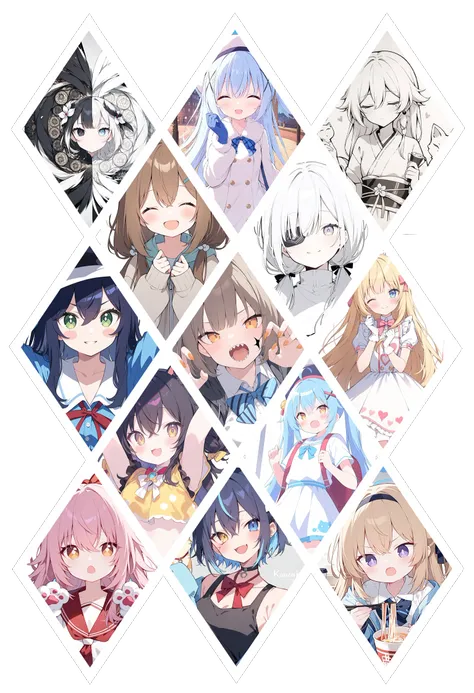
Checkpoint
万象熔炉 | Anything XL
#Animal
0 comentario(s)
0
1
0




